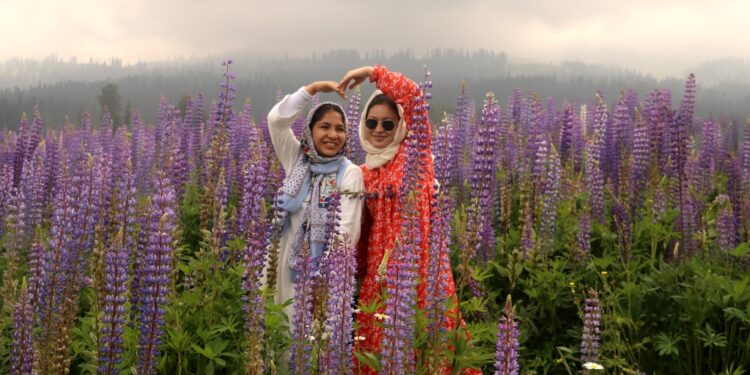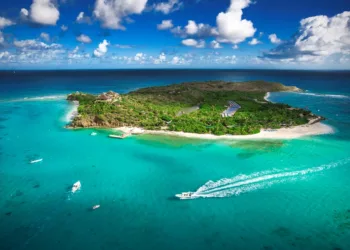Tourists are gradually heading back to J&K as the long shadows of militancy and Covid-19 start receding, reports Peerzada Shabir from Srinagar
Despite simmering terrorism and pandemic fears, the tourism industry in Jammu & Kashmir is gradually returning to normalcy for the first time after a decade. An estimated 1.06 crore tourists have visited Kashmir from January to July 3 this year, reveals the official data released by the Office of Commissioner/Secretary, Department of Tourism, J&K. Tourism Commissioner Sarmad Hafeez said that during the current calendar year – from January 2022 till July 3, 2022 – the tourist footfall in the Union Territory of J&K increased significantly and is estimated to be around 1,06,24,000. The Valley is witnessing an exponential increase in the tourist flow and official data suggests that tourist arrival has broken the 10-year record.
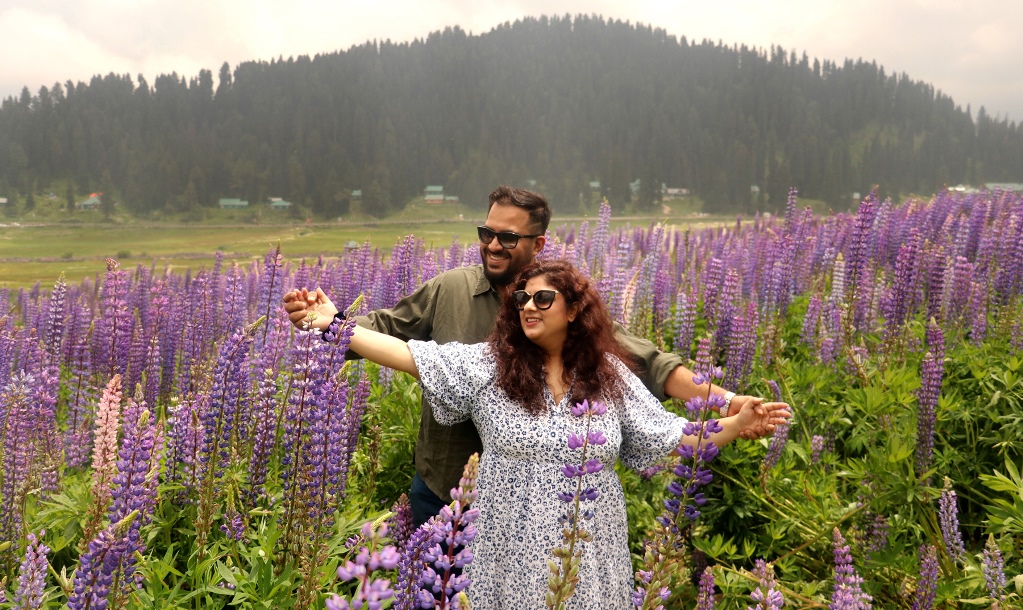
Over the years, tourism, one of the mainstays of the Kashmir economy, was hit the hardest. There is a large section of people who have largely been without employment for the past two and a half years. Their savings have been depleted. As a result, in 2021, many suicides and suicide attempts took place. The major reason was financial distress caused by the turmoil of the preceding two years and the extended lockdowns as a result of the Covid-19 pandemic.
According to Athar Ahmad Bhat, owner of Earth Explorers Travel and Tours, thousands of bookings were cancelled after the Pulwama attack of 2019. Then, the lockdown in August in the wake of the abrogation of Article 370 and successive lockdowns during the pandemic brought tourism to a grinding halt. Athar added that the number of tourists visiting the Valley plummetted drastically. The Kashmir Valley as a tourist destination was largely boycotted.
Shikara owner Bilal Dar shared that for three years, they earned nothing. He said that some sold their boats because they could not afford to maintain them, and the meagre amount of money they had went into looking after basic necessities.
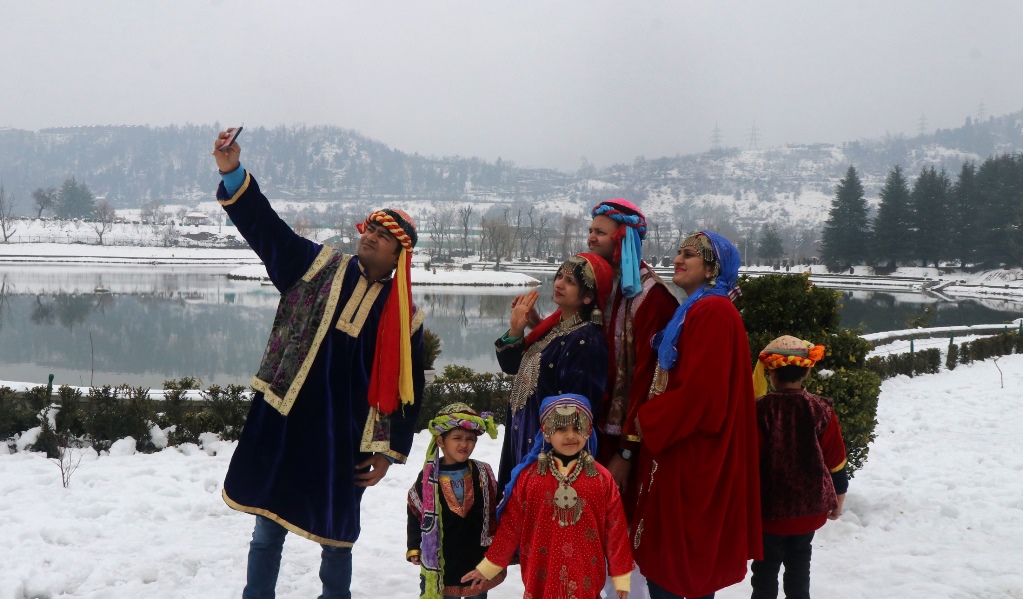
The second wave of Covid-19 dealt a huge blow to the tourism industry in J&K, which is one of India’s biggest tourist attractions globally. A United Tourism Forum member says, “According to an estimate, this industry suffered a loss of about ₹1500 crore.”
“Winter tourism was very successful here. The Tourism Department worked hard and organised many festivals and road shows in different parts of the country and abroad not only to attract tourists but also provide prospective investors the facility to have a dialogue on investment opportunities in the region. These roadshows covered cities like Mumbai, Hyderabad, Chennai, Ahmedabad and even Dubai. All this came as a ray of hope to recover the losses of the past three years, triggered by the February 2019 suicide attack in Pulwama, South Kashmir, killing around 40 CRPF personnel. But when the second wave of the Covid-19 pandemic started, we didn’t expect that it would bring such disaster that everything would get halted. Tourism, which is a very delicate sector, was impacted badly,” said Director Tourism G.N. Yatoo.
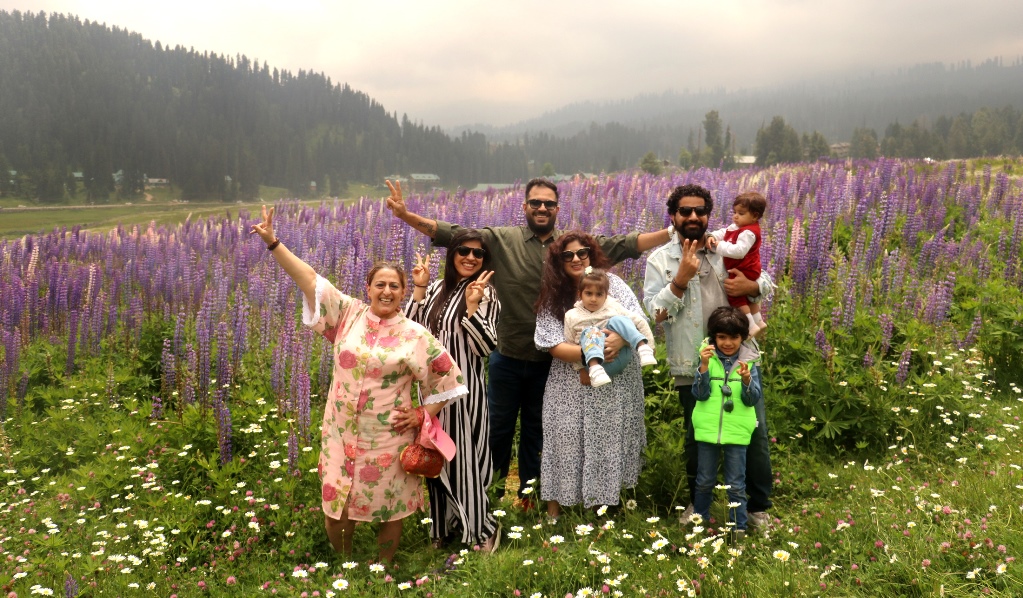
Moreover, people who used to come from Maharashtra, Gujarat and Delhi to Kashmir couldn’t move about due to the lockdown. However, the situation has now become stable, resulting in resumption of tourism activities.
Over the years, the Dal has become a symbol of Kashmir’s booming tourism industry. The houseboats on the lake are quite popular with tourists and are likely to be for some more years before they sink into oblivion for want of repairs or reconstruction. Both have been banned due to their contribution to water pollution, something the lake dwellers decry as an ‘injustice’.
The Jhelum, which flows like a serpent, divides the city into two halves and lofty chinars adorn it like emeralds. There are some structures like the new government secretariat that are easily recognisable from the top. From the hillock, the rest looks like a mosaic of flowers in a pond. It is pleasant from above but most things in Kashmir look beautiful from a distance. The landscape of the city, which is expanding on all sides, has changed significantly.
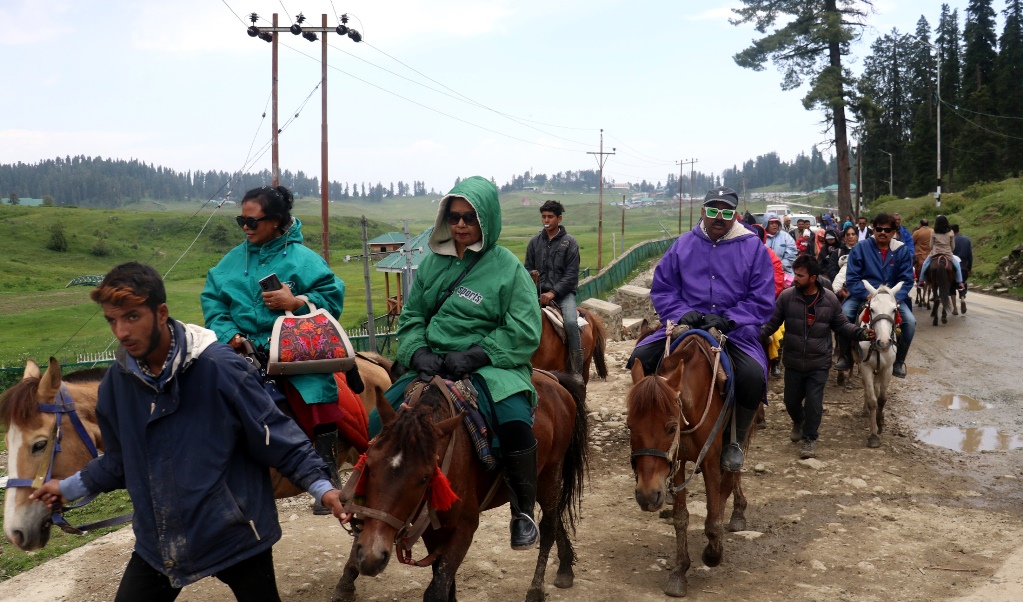
The boulevard leads to some of the major tourist attractions, including the Mughal Gardens. Scores of new hotels and guest houses, and homestays have come up in the past few years and after the two-year slump, this year has been rewarding. Even as agriculture and especially horticulture is the economic backbone of J&K, there is greater focus on tourism. The government has made significant contributions with a record allocation of ₹786 crore to the sector this year.
“The tourists visited 64 offbeat destinations across J&K,” Hafeez said, adding that there were almost no complaints from tourists about the arrangements at these destinations. He said that in February around 1.42 lakh tourists arrived, breaking the seven-year record. In April, the Srinagar International Airport recorded its busiest days ever, with 15,014 people travelling on 90 flights in and out of Kashmir in one day.
Right now most hotels are booked with the resorts in Gulmarg, Pahalgam, and near the Dal lake attracting increasing numbers of tourists. However, the UT government has now increased the options for tourists by developing more resorts. For example, Aharbal, Yusmarg, Tosamaidan, Gurez, and the historic old city in Srinagar are finding prominence on the tourist map of Kashmir. These places are being further developed with tourist infrastructure and also being given wider publicity.
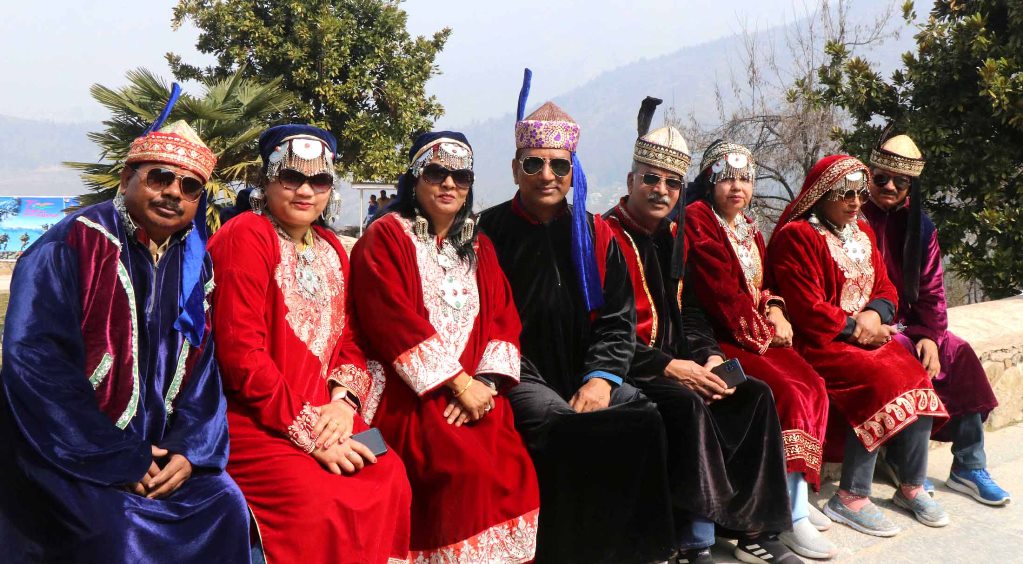
A combination of factors has made the tourism boom possible: One is the perception across the country that after revocation of Article 370, J&K has been fully integrated into India. Second, the Covid-19 fallout has severely reduced options for going abroad and, third, the sweltering summer in the plains of India has forced people to escape to colder places like Kashmir. The Tourism Department has said that an advertising campaign across major Indian cities and the opening of new destinations were also attracting more tourists.
The tourism sector forms 6.8 percent of Kashmir’s GDP and employs two million people. The sector has the potential to shore up the UT’s beleaguered economy. The waning pandemic is once again creating conditions for unhindered tourism in the Valley. The tourists can thus continue visiting Kashmir, which would help resuscitate the economy and generate jobs.
Many hoteliers and houseboat owners say that this year tourists booked rooms in advance and the earnings helped them pay part of their debts. Hoteliers, taxi drivers and tour operators are doing brisk business after years. “Hotel room tariffs have gone up by over 43 percent from the pre-Covid period, and there is a huge rush for bookings,” said Azad Mukhtar, a houseboat owner. The rush is so strong that tour operators said they are having a hard time finding bookings for their clients as hotels are between 80 percent and 90 percent full and airfares have increased.
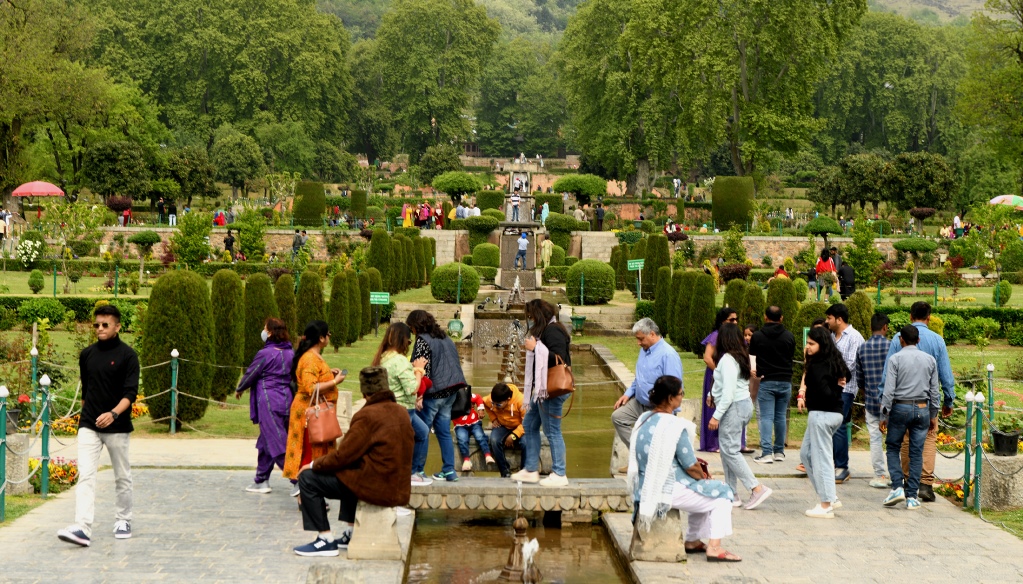
Tour operators said that hotel rooms are full in premier locations. They said that many high-end tourists from wealthier Indian states such as Gujarat, Delhi and Mumbai were opting for the Kashmir Valley instead of destinations in Europe because of pandemic-related uncertainty.
Mohammad Yasin Tuman, managing partner of Mascot Travels, says that they have limited high-end accommodation and commercial transport services which is a major challenge. At the same time, tourists are not overly bothered. A Sikh couple who came from Australia said they were mesmerised by Kashmir’s beauty.
The J&K government has started to give a boost to adventure tourism under a scheme called J&K Tourist Village Network as part of Mission Youth. The initiative, officials said, is aimed at transforming 75 villages of the UT known for historical, picturesque beauty and cultural significance into tourist villages. The move aims at recognising the uniqueness of each village and showcasing the landscapes, indigenous knowledge systems, cultural diversity and heritage, local values and traditions, besides encouraging film shooting and offering financial incentives as well as ensuring a digital platform to these villages. The youth-led sustainable tourism initiative will strengthen the rural economy and community entrepreneurship, empowering youth and women by providing direct and indirect employment opportunities.
“The J&K administration is putting special focus on the tourism sector, and the region has started witnessing significant growth in terms of increased number of tourists and creation of tourism-related infrastructure,” officials said, adding that dedicated focus is also being laid on bringing unexplored religious places of J&K on the religious tourist map.
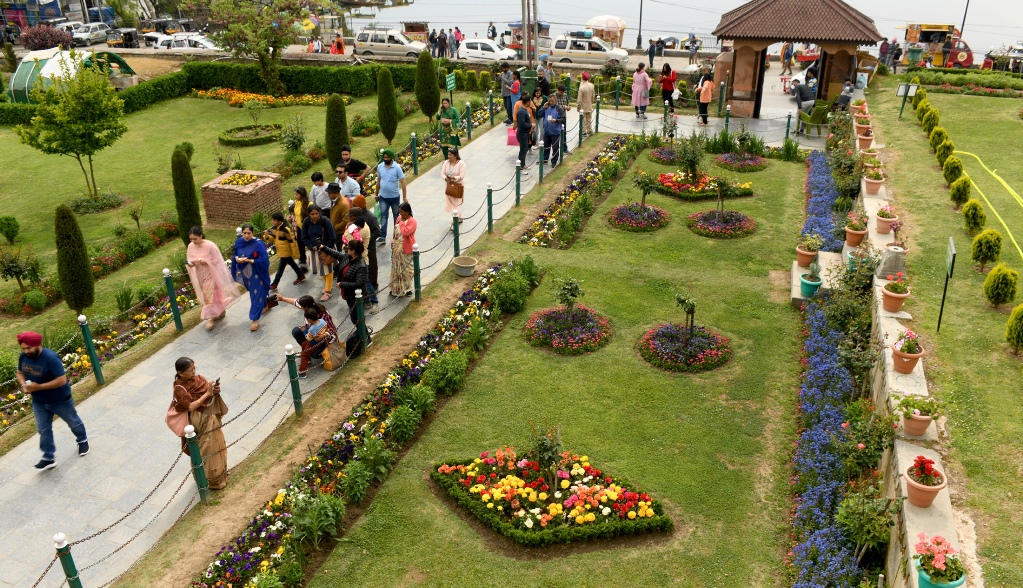
Of late, the J&K Tourism Department has also organised events such as the Jammu festival, a whitewater rafting championship, a Christmas Carnival in Gulmarg and Pahalgam, a Winter Carnival, the Gulmarg Snow Festival, a Lohri Festival and Mata Vaishno Devi Sangeet Sammelan as part of its calendar of activities. This wide array of celebrations and activities has given tourism a definite boost. The administration is promoting 75 new tourist places by developing comprehensive facilities in an integrated manner with adequate provisions for recreational activities, eateries and restrooms to facilitate a deeper and more comprehensive insight into the cultural and architectural heritage of J&K.
Mumbai-based business tycoon Ajay Maheshvari, who recently visited Kashmir, said the beauty had mesmerised him in different ways, especially when it snowed heavily. The introduction of direct evening flights has given a shot in the arm to tourism in J&K. Night flight operations have already begun at Srinagar’s Sheikh Ul Alam airport, thus allowing travellers to get into the Valley at all times of day. In addition, direct flights from large cities like Bengaluru will attract more visitors to the UT. The director of Kashmir Tourism, Dr G.N. Itoo, said that the Valley has been aiming for such a development for a long time, since the direct and evening flights will help travellers, especially busy people like businessmen, to save time. He said that such flights would increase the tourist inflow into the UT.
Kashmir was traditionally the favourite filming location for Bollywood movies until militancy erupted three decades ago. However, with conditions improving by the day, Bollywood filmmakers are once again showing a willingness to return to the Valley.
Also, the Centre and the J&K government, at the first J&K Real Estate Conference held in Jammu, have decided to throw open local real estate for “second homes and summer homes” to all the citizens of the country. This is a major push to attract investments and a step towards development, which will also enhance business opportunities in J&K, especially the tourism sector.
The government is also working hard to woo business leaders in Dubai into becoming prominent players in key sectors like tourism and handicrafts as well as taking advantage of investment opportunities in the UT. In its ongoing efforts to strengthen the hospitality and tourism industry, it has signed an MoU with UAE’s pioneering financial services company, Century Financial, that will invest $100 million in the UT. This investment will cover three hotels and one commercial-cum- residential complex in J&K.
The signs of tourism revival bode well for J&K, hitherto referred to as one of the world’s trouble hotspots.

The writer is a senior journalist based in Kashmir. He mostly reports on defence, internal security, politics and tourism.


